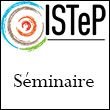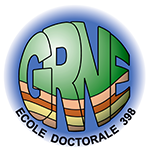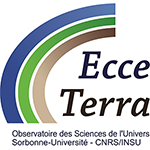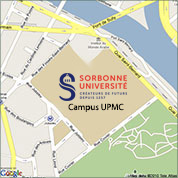Séminaire ISTeP - Marine Paquet

(IPGP)
Effective global mixing of the highly siderophile elements into Earth’s mantle inferred from oceanic abyssal peridotites
Late accretion occurred through addition of massive impactors to Earth, leading to potential heterogeneity in the distribution of highly siderophile elements (HSE: Os, Ir, Ru, Pt, Pd, Re) within the mantle. Abyssal peridotites sample the presentday convecting mantle, which make them useful for examining the distribution of the HSE within the mantle. Here we report new HSE abundance data and 187Os/188Os ratios, in conjunction with mineral chemistry and bulk rock major- and trace-element compositions for abyssal peridotites from the fast-spreading Pacific Antarctic Ridge (PAR) and East Pacific Rise (Hess Deep), and for slow to intermediate spreading ridges from the Southwest Indian Ridge, Central Indian Ridge and Mid-Atlantic Ridge. These analyses expand the global abyssal peridotite Os isotope and HSE database, enabling evaluation of potential variations with spreading rate, from ultraslow (<20 mm/yr, full spreading rate) to fast (135–150 mm/yr). Accounting for likely effects from seawater modification and serpentinization, the Pacific data reveals heterogeneous and sometimes significant melt depletion for PAR (3–23%) and Hess Deep abyssal peridotites (15–20%). Abyssal peridotites from fast to intermediate spreading ridges reveal no systematic differences in the distribution and behavior of the HSE or Os isotopes, or in degrees of melt depletion, compared with slow to ultraslow spreading ridges. These observations arise despite significant differences in melt generation processes at mid-ocean ridges, suggesting that the effects of ancient melt depletion are more profound on HSE compositions in abyssal peridotites than modern melting beneath ridges. Using global abyssal peridotites with Al2O3 content > 2 wt.%, the average composition of the primitive mantle is 0.3 ppb Re, 4.9 ppb Pd, 7.1 ppb Pt, 7.2 ppb Ru, 3.8 ppb Ir and Os, showing no Pd/Ir, but a positive Ru/Ir anomaly, relative to chondrites. Most of the variation of the HSE abundances in the oceanic mantle is observed at small length scales (<1 km) and is due entirely to both modern and more ancient partial melting effects. Consequently, any significant HSE heterogeneities formed during late accretion or early Earth differentiation processes are no longer recognizable in the mantle sampled within ocean basins, implying generally efficient mixing of Earth’s mantle for these elements. By contrast, relatively ancient heterogeneity in Os and other radiogenic isotopes has been effectively preserved in the convecting mantle over the last 2 Ga, through recycling processes and through preservation and isolation of melt-depleted refractory residues.
Ce séminaire/webinaire se tiendra en présentiel pour les personnels présents en salle de conférence de l'UFR TEB (46-56, 2ème étage) ainsi qu'en ligne à partir de 12h30 via le lien Zoom ci-dessous.
Topic: Marine Paquest seminar
Time: Feb 24, 2022 12:30 PM Paris
Join Zoom Meeting
https://zoom.us/j/99585941385?pwd=ZHRwMkVaSDM0alo2Zkx3K2J3ZWJtdz09
Meeting ID: 995 8594 1385
Passcode: AqY4k4
Egalement dans la rubrique
- Séminaire ISTeP - Aurélien Beaumais
- Séminaire ISTeP - Céline Baudouin
- Séminaire ISTeP - Stephen Centrella
- Séminaire ISTeP - Bruno Scalabrino
- Séminaire ISTeP - Matilde Ferrante
- Séminaire ISTeP - Guillaume Bonnet
- Séminaire ISTeP - Gaétan Milesi
- Séminaire ISTeP - Olivier Galland
- Séminaire ISTeP - Julien Charreau
- Séminaire ISTeP - Fabio Speranza
- Séminaire ISTeP - Philippe Yamato
- Séminaire ISTeP - Manon Delaison
- Séminaire ISTeP - Frauke Klingelhoefer
- Séminaire ISTeP - Geoffroy Mohn
- Séminaire ISTeP - Leïla Ben Khelifa
Chiffres clés
L'ISTeP comprend 108 membres dont :
- 12 professeurs
- 21 maîtres de conférences
- 2 directeurs de recherche CNRS
- 2 chargés de recherche CNRS
- 7 ATER et post-docs
- 26 doctorants
- 21 ITA-IATSS
- 17 collaborateurs bénévoles / émérites





